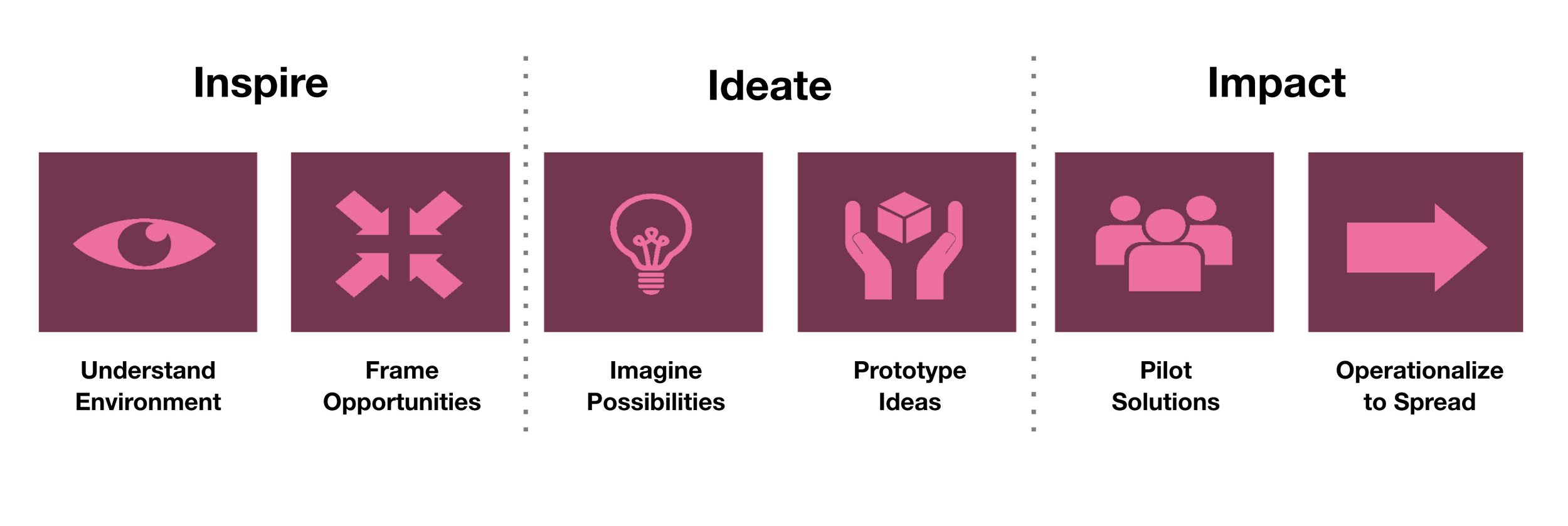Twenty Years of HCD
HCD at KP circa 2010; the second version of our method. Most notable was the direct linkage to spread. This is not seen in most methods.
Twenty years ago, a rag-tag trio gathered in a bar. Their convener, Christi Zuber, somehow found Adrienne Philpart and me and invited us to meet her there. She heard through the Kaiser Permanente grapevine that we wanted to try new things and were dissatisfied with how we solved challenges. The three of us barely knew each other, but what Christi proposed over that beer was radical and an escape hatch for each of us.
Radical because human-centered design (HCD) was very new in healthcare. In 2003, Mayo Clinic SPARK Unit and Memorial Hospital in South Bend, Indiana. (please don’t be offended if you were doing HCD in healthcare in 2003 and I didn’t mention you. Add your “me too! In the comments) and had been using the approach for under a year with promising results. An escape hatch because, honestly, I don’t think the three of us would have lasted as long as we did had it not been for human–centered design. HCD made everything click. Solutions came faster, patients and caregivers were part of the creation (we didn’t even call it co-design back then!), and even better, we had documented impact by implementing interventions across the KP system. I stayed another whopping 15 years.
When I look at the landscape of HCD in healthcare, I know we were one of the lucky ones. It was a time before the “machine of design thinking” and at an inflection point at KP, where an organization in massive technological and physical space transitions desperately needed this kind of approach. Our group, KP’s Innovation Consultancy, was commissioned, using HCD, to solve complex challenges via new or enhanced products and services. And at just the right level of impact that made this national department an ongoing entity for 17 years. Far, far longer than most innovation groups in healthcare
HCD is far from perfect. As it grew up and we grew up, we learned about our biases, about our most imperfect interview techniques, and about being unintentionally extractive. But it's an approach that learns and changes. Witness the birth of Liberatory Design, Equity-Centered Design, Design Justice, and more. The HCD of 2023 is not the HCD of 2003.
At almost this exact moment, twenty years ago, the four of us were doing a jig (Maureen Sheahan was not at the bar meetup, but she quickly made us a foursome). After a 6-month demonstration project, which was supposed only to test HCD as a methodology, there was viral demand for the prototype we designed. For us and many KP leaders, it was hard to recall when there was a demand for implementation. That sealed the deal; HCD was a powerful tool. Design centricity cuts through the many perverse healthcare Frankensteinian pieces and parts to make something desirable and impactful.
I’ve seen many healthcare innovation groups rise and fall over the years, and in 2023, HCD is not “fashionable.” Part of that is because design-centricity has been diluted - sprinkled across instead of concentrated in. But still, for those of us who continue to push boundaries, working with communities to co-design interventions AND IMPLEMENT THEM, and infuse energy/joy into the process of solving, HCD and its derivatives continue to cut through the noise.

